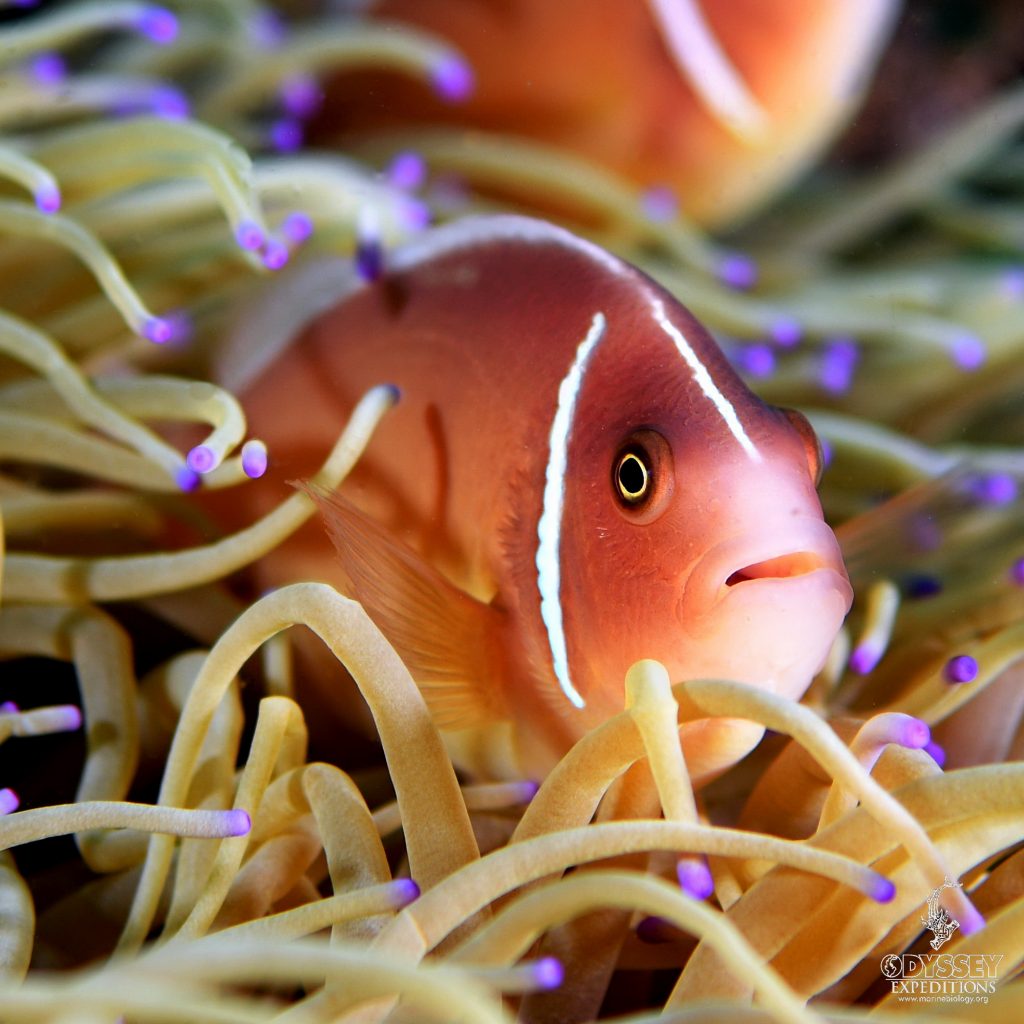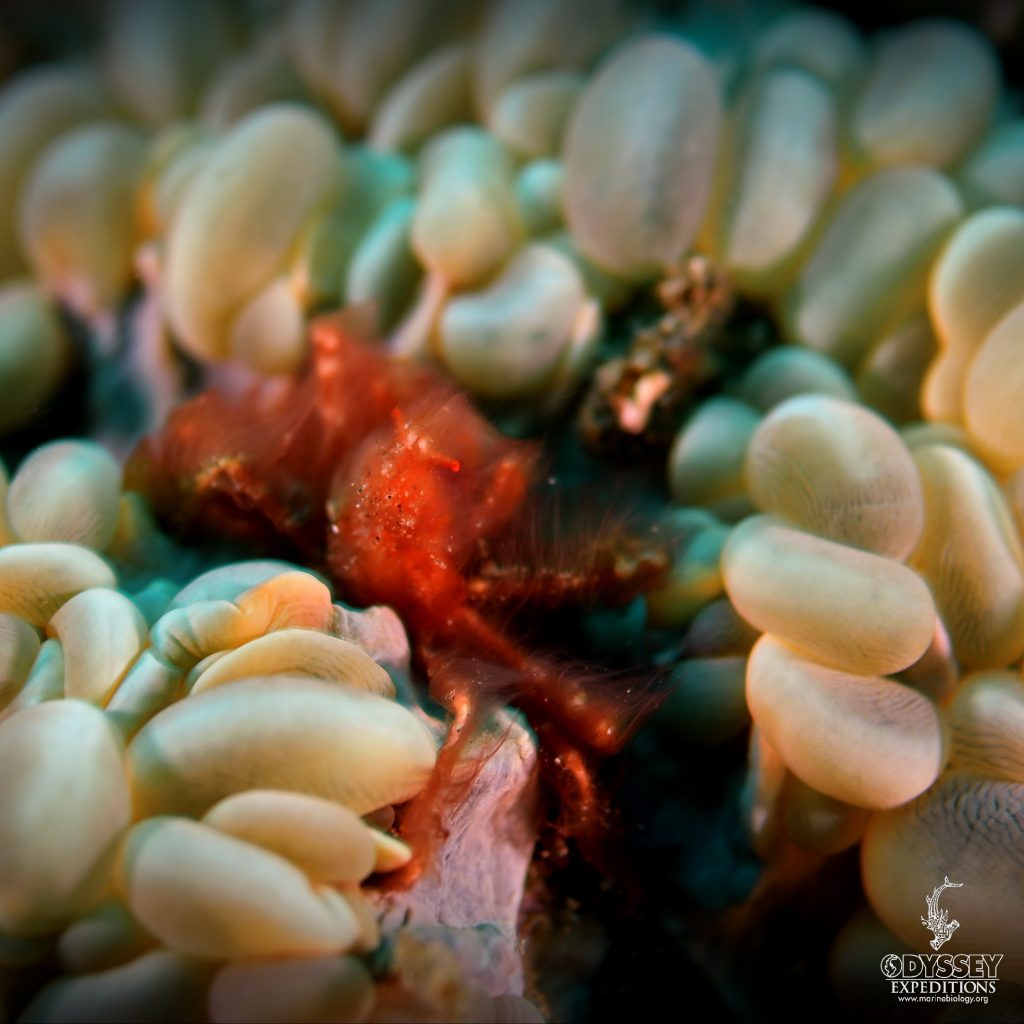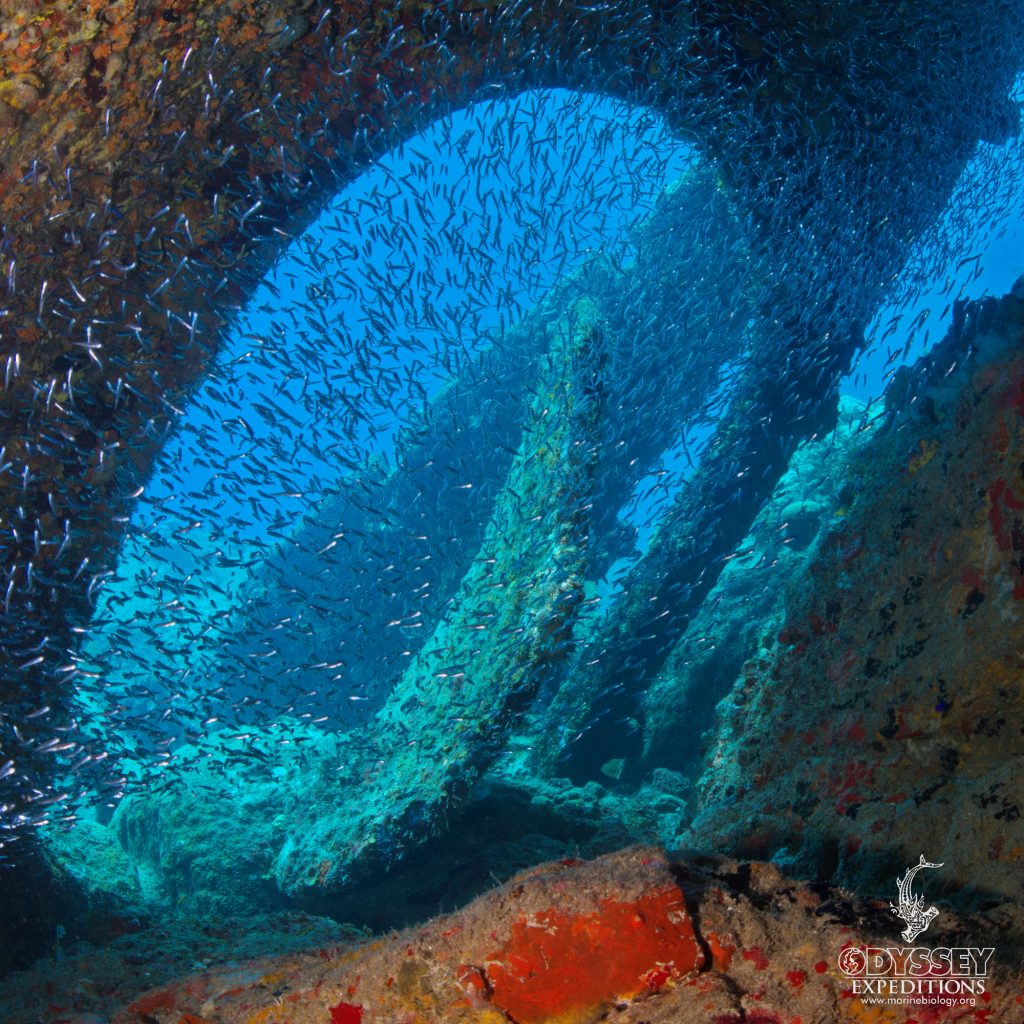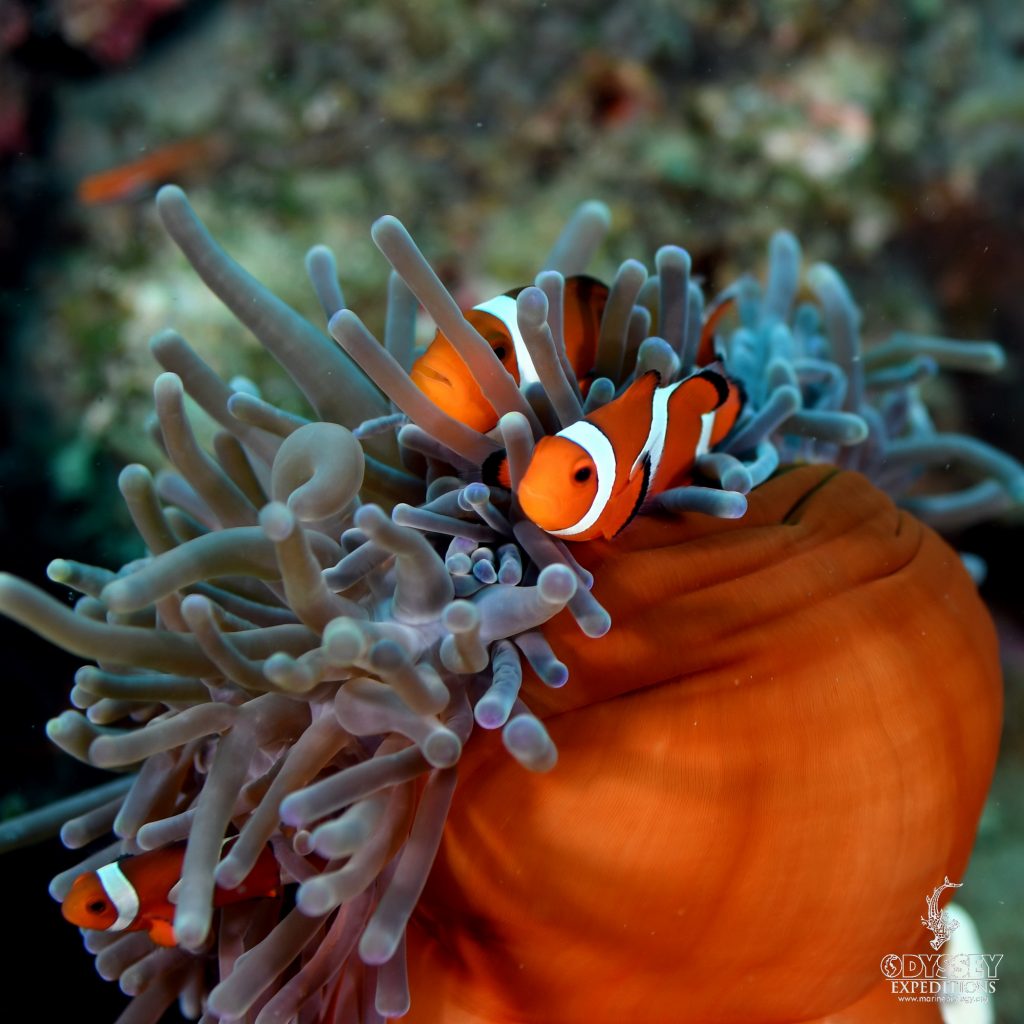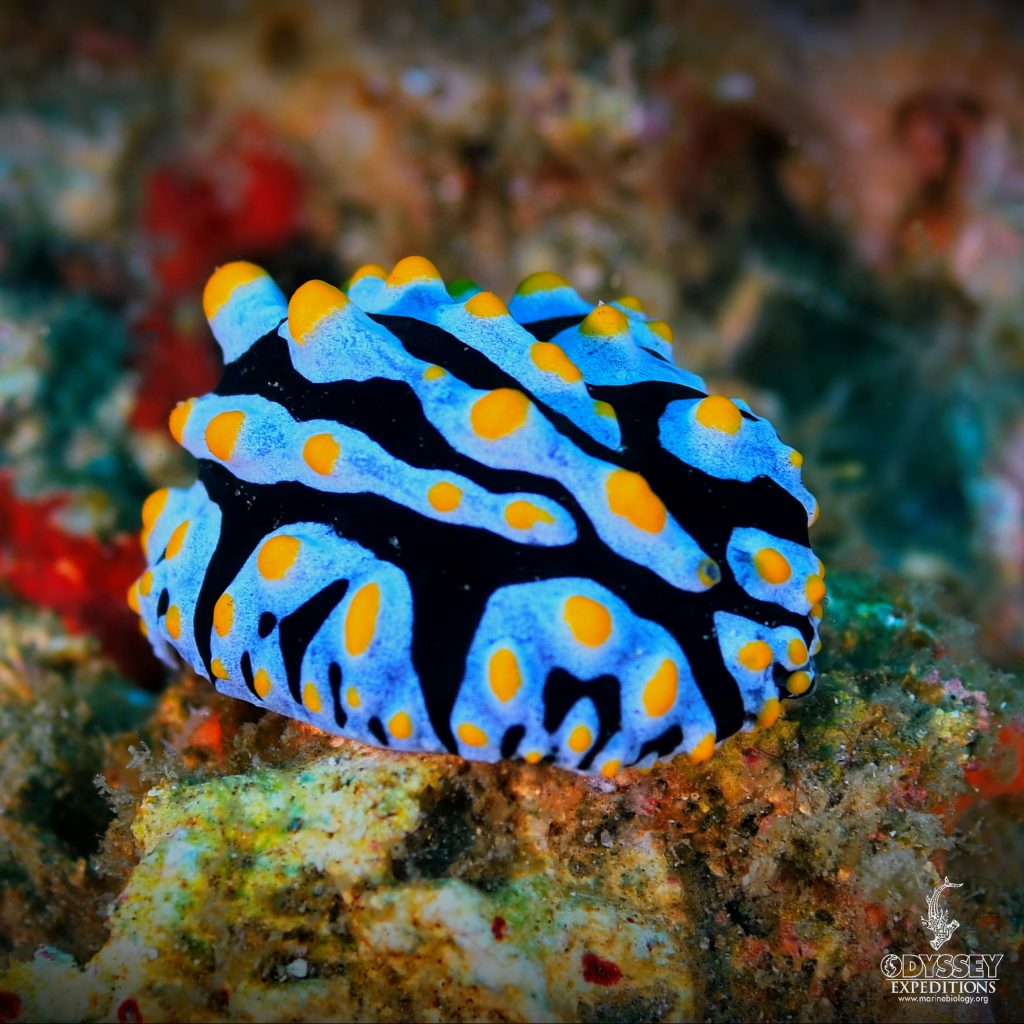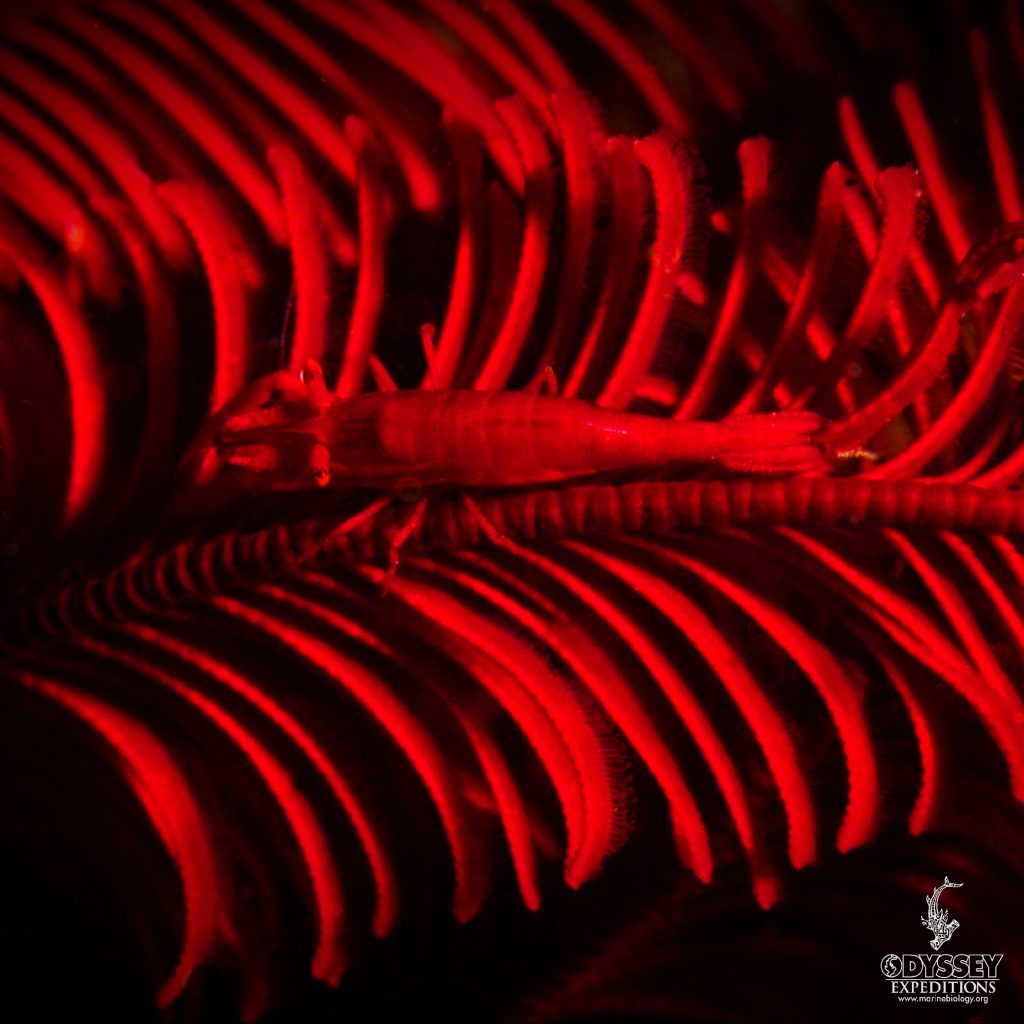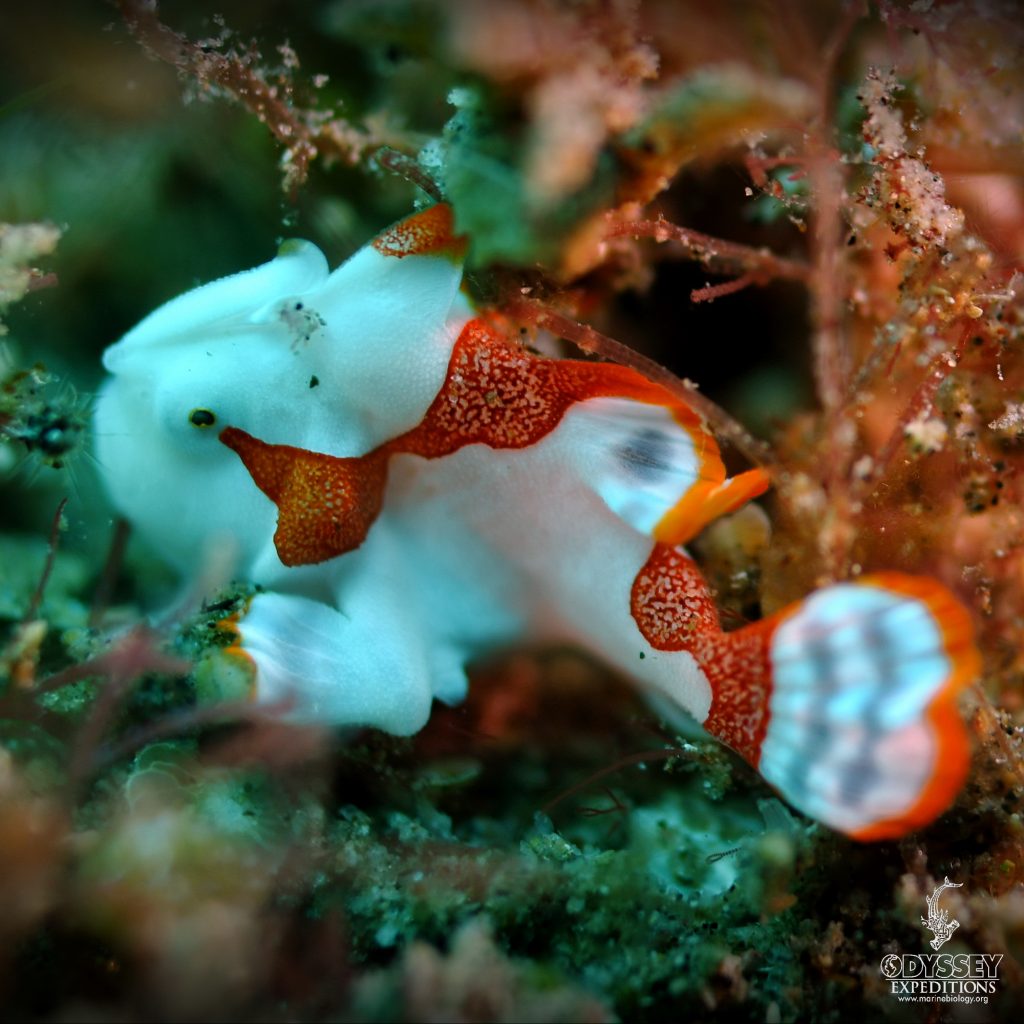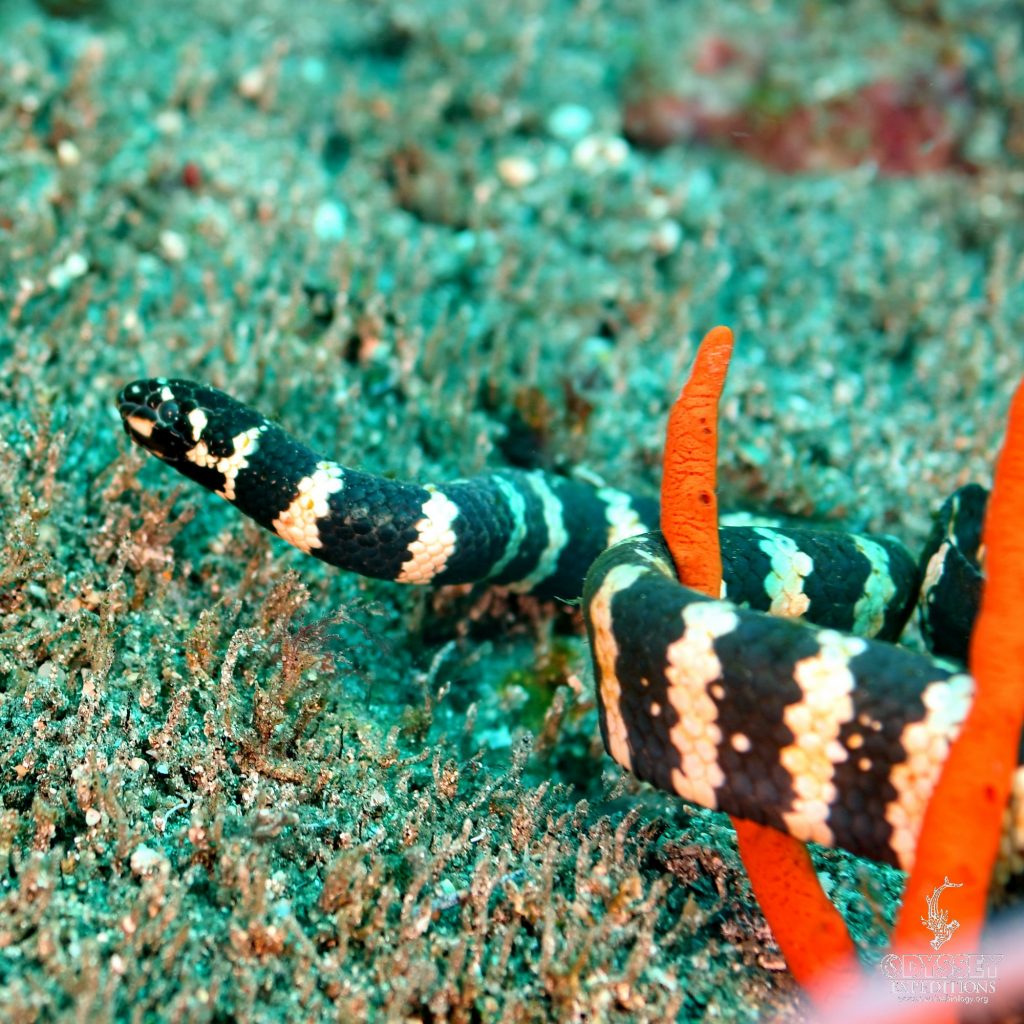
– Laticauda colubrina
Yellow-lipped Sea Krait or Banded Sea Krait – Laticauda colubrina
The worlds most venomous sea snake, found in tropical Indo-Pacific oceanic waters. They have distinctive black stripes and a yellow snout, with a paddle-like tail for use in swimming.
It spends much of its time underwater in order for it to hunt, but returns to land to digest, rest, and reproduce. It has very potent neurotoxic venom which it uses to prey or when feeling threatened by attack. When hunting, banded sea kraits frequently head into deep water far from land. Individual banded sea kraits return to their specific home islands, exhibiting philopatry.
Hunting is often performed alone, but may also do so in large numbers in the company of giant trevally and goatfish. This cooperative hunting technique is similar to that of the moray eel, with the banded sea kraits flushing out prey from narrow crevices and holes, and the partner feeding on fleeing prey. Their main prey item is eel but they have also been observed feeding on small fish such as gobies. They trap their prey in coral crevices using coils of their body. They show sex-based ecological divergence. For example, males being the smaller sex usually forage in shallower water than females and also tend to prey on different kinds of eels, than do their mates.
A deadly game of heads or tails: While probing crevices with their head, they are unable to observe approaching predators and can be vulnerable. The snakes can deter predators, such as larger fish, sharks, and birds, by fooling them into thinking that their tail is their head, because the color and movement of the tail is similar to that of the snake’s head.
Etymology
Laticauda = Latin latus = ‘broad’, +cauda, ‘tail’, in reference to the wide, flat tail
colubrina = Latin colubrinus = ‘having the qualities of a snake’.

